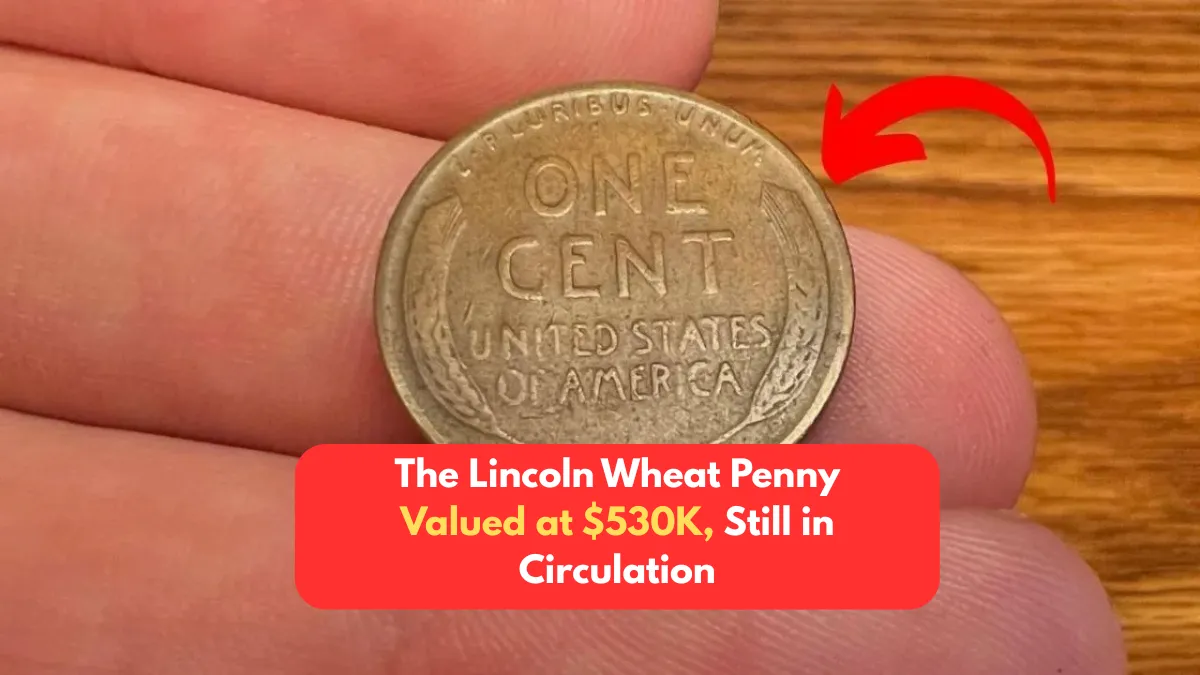It’s hard to imagine that a single penny—often ignored or tossed into jars—could be worth more than half a million dollars. Yet, that’s exactly the case with a rare Lincoln Wheat Penny that has been valued at a staggering $530,000. What makes this tiny copper coin so valuable? And how is it possible that one could still be floating around in everyday circulation?
Here’s everything you need to know about this hidden treasure of American coinage, and how to determine if you might unknowingly have one in your pocket.
What Is a Lincoln Wheat Penny?
The Lincoln Wheat Cent, also known as the Wheat Penny, was minted from 1909 to 1958. It features:
- Abraham Lincoln’s profile on the obverse (front)
- Two stalks of wheat flanking the words “ONE CENT” on the reverse (back)
These coins are widely collected, and while most are only worth a few cents or dollars, a few extremely rare varieties can be worth a fortune—like the one valued at $530,000.
Why One Wheat Penny Is Worth $530,000
The specific Lincoln Wheat Penny that commands this massive price is believed to be one of a rare error or low-mintage issue, such as:
1. 1943 Bronze Wheat Penny (Most Likely Candidate)
During World War II, the U.S. Mint used steel-coated zinc for pennies to save copper for the war effort. However, a few 1943 pennies were accidentally struck on leftover bronze planchets from 1942.
- Estimated Value: $250,000 to $530,000+
- Rarity: Fewer than 20 known examples
- How to Spot It:
- The coin will be brown/copper, not silver-colored
- Should not stick to a magnet
- Weighs around 3.11 grams (steel cents weigh 2.7g)
2. 1944 Steel Wheat Penny
In contrast to the 1943 error, a few 1944 pennies were mistakenly struck on leftover steel blanks instead of copper.
- Estimated Value: Up to $200,000+
- How to Spot It:
- Silver-colored steel
- Sticks to a magnet
- Dated 1944 instead of 1943
3. 1909-S VDB Penny
The very first Lincoln penny, minted in San Francisco in 1909 with designer Victor D. Brenner’s initials (“VDB”) on the reverse, is one of the rarest and most iconic.
- Estimated Value: $1,000 to $100,000+, depending on condition
- Extremely collectible
- Only 484,000 ever minted
How to Identify a $530K Wheat Penny
Use the following checklist to determine if you have a valuable Wheat Penny:
Check the Year
Look for 1943 (should be bronze, not steel) or 1944 (steel instead of copper). Also keep an eye out for 1909-S VDB.
Test with a Magnet
- Steel pennies (silver-colored) stick to magnets
- Copper/Bronze pennies do not
Weigh the Coin
- Standard bronze/copper Wheat Pennies: ~3.11 grams
- Steel cents: ~2.7 grams
- Any variance could signal a planchet error
Inspect the Mint Mark
- “S” stands for San Francisco (usually lower mintage)
- “D” stands for Denver
- No mark = Philadelphia
Examine the Condition
- Coins in uncirculated or mint state (MS-65 or higher) are significantly more valuable
- Avoid cleaning, which reduces value
What to Do If You Find One
If your penny meets any of these rare criteria:
- Don’t clean it — even minor cleaning ruins value.
- Use gloves to handle it, avoiding oils and damage.
- Take it to a coin dealer or numismatic expert.
- Consider getting it graded by PCGS or NGC.
- Sell through a trusted auction house if it proves to be the real deal.
Fun Fact
One of the most famous 1943 bronze Lincoln cents sold at auction for $1.7 million in 2010. With high-profile collectors on the lookout, the value of the rarest Wheat Pennies continues to rise—and the $530,000 estimate may one day seem modest.
Final Thoughts: A Penny That Could Change Your Life
While the idea of a $530,000 penny may seem unbelievable, coin collectors and treasure hunters know these stories are real. Rarity, historical significance, and condition all play a role—and you could be holding one without even realizing it.
Before tossing that old penny into the tip jar, take a closer look. It might be worth a whole lot more than one cent.
